IN the hours before disaster, as a bushfire burns in the distance, as winds stir, there’s a quiver in the pit of your gut and a voice in your head saying it’ll be OK.
The quiver gets Cal MacKinnon and her partner Adi Brown out of bed the morning before the afternoon sky turns orange and black. Down to a vantage point with views across the Illinbah Valley. Just to see how far away the fire is.
Gold Coast: Couple have dream wedding after calling it off during devastating Binna Burra fires
Gold Coast: State government funds festival to help Binna Burra recover from devastating bushfires
Video of charred remnants of famous Binna Burra Lodge
Granddaughter of Binna Burra founder devastated after losing home and famous Lodge
They gaze down from their mountain hamlet of Beechmont to the Gold Coast hinterland valley and over the Darlington Range towards Canungra, about 16km away, where a fire began burning six days ago. Other locals are watching, too.
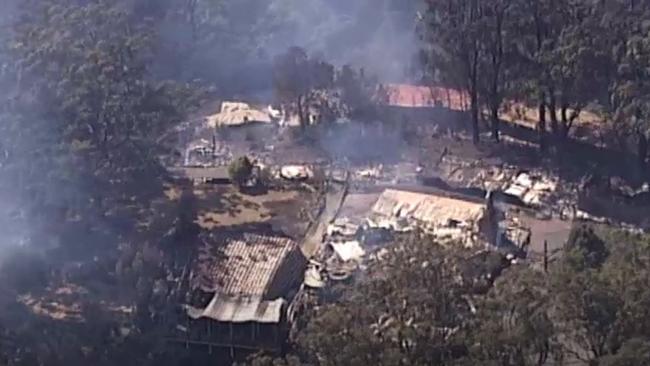
It’s a long way away, they agree. Still on the other side of the Coomera River.
“We thought, ‘There’s no way it’s going to cross the river’,” says Cal, a nursing student.
Still, they go home and pack some things.
Cal’s sister and neighbour Sally MacKinnon has fairy lights to put up. A friend of the surfing and fitness instructor is turning 50 and some mates are camping here tomorrow after a party up the road at the heritage-listed Binna Burra Lodge.
The quiver niggles. It’s still spring, long before bushfire season, but she climbs on the roof to clean the gutters, all the while thinking, “But I’m having guests!”.
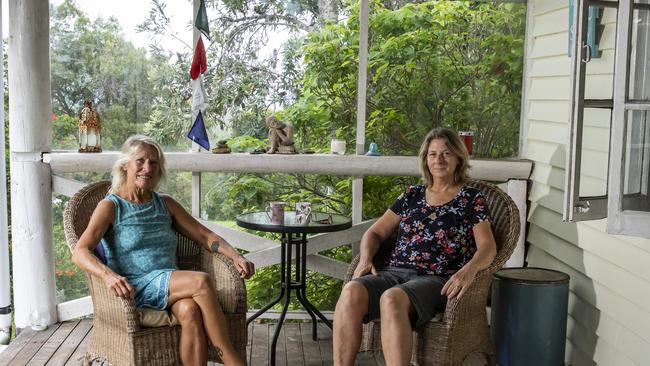
Nature tour guide Lisa Groom is heading to Stanthorpe to host a walking tour – but leaves a note on the table in her Timbarra Drive home, asking the kids to take the bundle of important documents and Jack the dog if the unthinkable happens.
Scott Parker is readying for a full house at Binna Burra where he’s the revenue manager. But he’s also the fire warden and the quiver is stirring. Guests are put on alert.
It’s Friday September 6 last year. The nights on the mountain are still chilly. But the days are hot. For weeks, everyone’s been talking about how dry it is.
How the moisture seems to have been sucked out of this normally lush, green landscape.
Then, as afternoon arrives, the winds whip up.
Fire rushes down the range, gobbling up the parched eucalypts in the valley. It’s voracious, moving 4km in 10 minutes. By early afternoon, it’s crossed the river.
Parker is standing on the lodge’s terrace, looking out to the valley below, sprinklers on to wet the hillside. Winds are gusting at 90km an hour from the west-northwest, the humidity a bone-dry 8 per cent. “You could barely hear anything because of the wind howling,” he says. “When the sprinklers passed, all the water blew in your face, you got this cold hit and then the heat, the heat blowing up the valley. You couldn’t just see the fire; you could feel it.”
He decides to evacuate the lodge about 3.30pm.
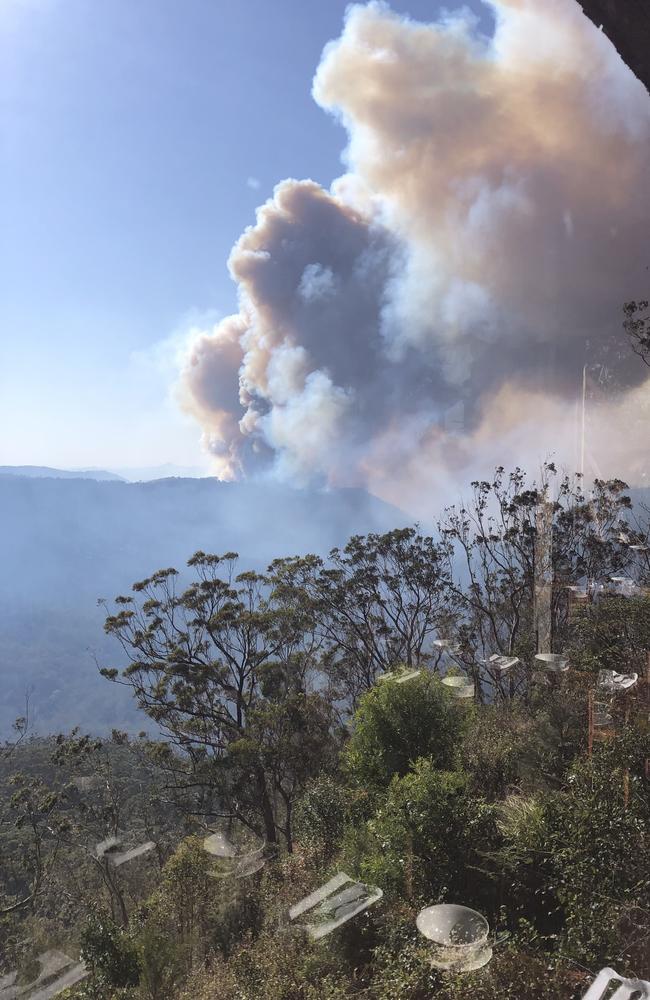
About the same time, Beechmont Rural Fire Brigade volunteer Suzanne Noakes is at her house at Timbarra estate, throwing things in a bag – including way too many sunglasses – before heading off to night shift at the Canungra control centre.
She texts her husband Steve Noakes who is in Jakarta.
“She said she’s locked the house and isn’t too sure if it will be there when she gets back,” says Steve, the chairman of Binna Burra Lodge. He books a flight home that night.
Evacuations of the two estates nearest Binna Burra, The Summit and Timbarra, begin about 3.30pm. With just one road in, there’s no option to stay and defend.
“It went really dark and really orange and really windy and there was ash falling from the sky,” says Cal. They load the cats, Fluffy and Sunday, into the packed car.
“Be safe little house,” says Cal, and heads down the mountain.
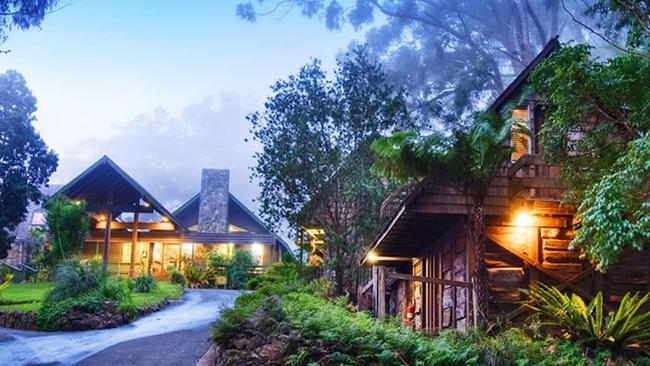
Just before the final, winding 5km drive to the 87-year-old Binna Burra Lodge, you reach Timbarra. On a spur of land rising from the Illinbah Valley, the tree-filled estate is about 500m wide, flanked by Lamington National Park’s wild forests.
Timbarra Drive doglegs off Binna Burra Rd along cliffs with houses on the cliff side. Normally, the view is spectacular but today, as waterbombers work the valley, it’s frightening. “You could see this massive orange glow from a couple of mountains away,” says Suzanne, 59.
“It was this apocalyptic feel. Ash was starting to fall on Timbarra.”
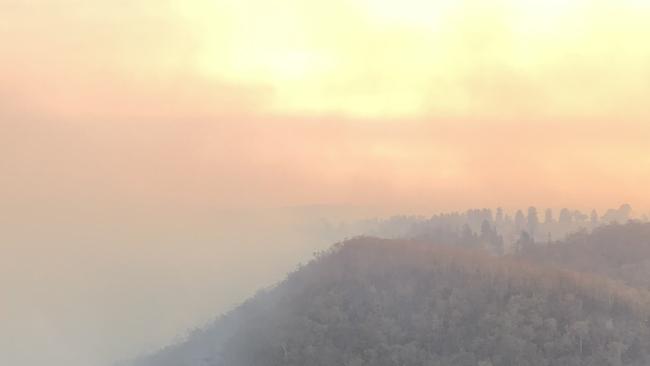
‘60FT FLAMES COMING UP LIKE A TSUNAMI’
As Suzanne drives down the mountain to Canungra, Beechmont Brigade’s first officer, Mark Ayers, 53, heads back up after an exhausting day.
The volunteer brigade has been fighting the blaze for days, a fire begun unintentionally on Saturday, August 31, after two teenagers discarded cigarettes.
No charges were laid. By late afternoon, emergency service vehicles are swarming the Beechmont roundabout, the closest thing the 350-home, 840-strong hamlet has to a village.
Evacuees gather there, waiting. The winds are fierce, the smoke thick.
Most of Beechmont’s 16 active firefighters have been ordered to rest, so urban and rural crews from nearby brigades head to The Summit and Timbarra. They put out spotfires as embers drift in.
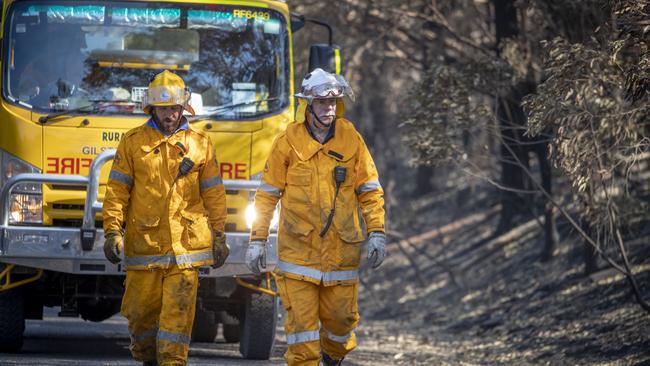
Eucalypts dominate the valley, but there’s also transitional rainforest such as hoop pine and brush box. Even some of that burns. But the Timbarra cliffs are acting as a barrier for the fire which forges past the rocky escarpment up the mountainside towards Binna Burra.
“It’s crawling around the base of the cliffs,” a firey friend tells Sally MacKinnon, now with friends at Palm Beach on the Gold Coast. “Please, please, stay down there,” she begs.
About 7pm, flames ahead of Timbarra suggest the fire has crossed Binna Burra Rd.
A crew investigates. It has, and is heading into the Numinbah Valley on the other side.
Fallen trees have blocked the road: if Parker and his team had delayed evacuating the 100-plus of the 250 guests who had already booked in, lives could have been lost.
Suzanne Noakes hears all this unfold from the Canungra control room. As Friday turns to Saturday, disaster strikes.
A flank of the fire comes back on itself, burning trees higher up along the cliff face.
The crews that have been saving houses from ember attack are withdrawn to the relative safety of Timbarra Drive’s intersection with Binna Burra Rd.
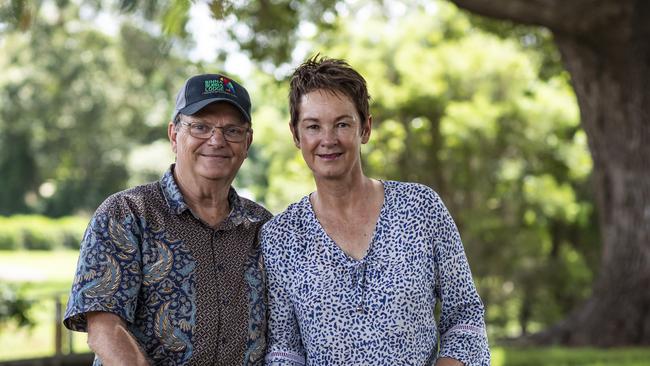
What if they hadn’t? “They would have died,” says Suzanne. Because about 1.30am, a wail of wind explodes over the radio.
“All of a sudden, I’m hearing, ‘There’s one gone, there’s another one gone’,” she recalls. “They’re calling out the houses that were lost on my street.
“They were talking about 60 foot [18m] high flames, coming across the crowns of the trees, so it’s coming up like a tsunami, that ball of fire coming over all those eucalypts.” She thought her house, away from the cliffs, was gone.
“I could just imagine it zigzagging through my community and pretty much lighting up the whole neighbourhood. I just thought ‘There’s no hope. No hope’.”
In the early dawn, Greg McKenzie, a 35-year veteran of the Beechmont brigade, arrives at Timbarra. Usually, he says, after a fire, there’s a bit of chatter between crews. Not now.
“They were in zombie mood. Just physically exhausted and too emotionally drained to interact with one another.”
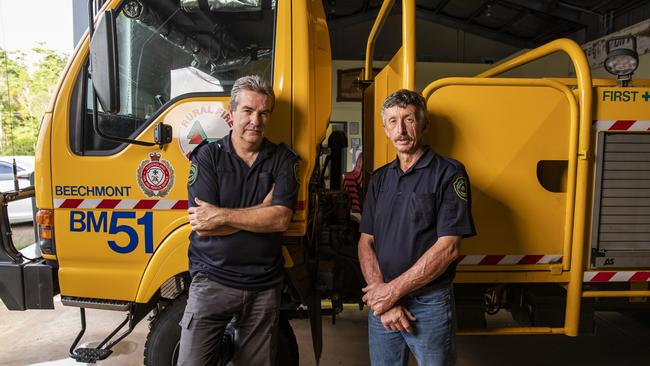
All five houses on the cliff side of the road are gone. Two on the other side are smouldering wrecks, another partially lost. “Smoke and soot and ash was still falling,” says McKenzie, 63. “Bits and pieces burning all over the place.”
The Noakes’ home survives. Lisa Groom’s house across from the cliffs and many others are saved by fireys who went back in as soon as the flame tsunami rolled over. Flames have licked right to the front steps. But Binna Burra, Groom’s childhood home, the place her grandfather Arthur Groom co-founded, where her family still own houses, is yet to meet the fire.
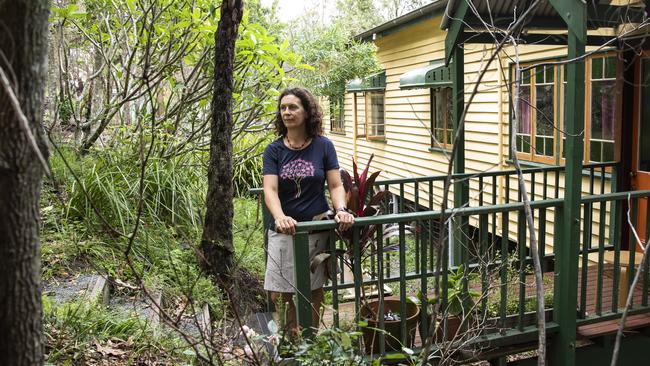
COUNTING THE LOSS
Come morning, everyone wants to know if their home is safe. Ayers knows the tally but can’t tell anyone, not even close friends whose house is gone.
Official procedure must be followed. No residents are allowed back in as the danger is high, the fire still spotting. It’s a heavy weight.
Even now, Ayers’ voice falters as he talks about when a fire like none Beechmont had ever seen terrorised the mountain. He’s the one who calmed anxious neighbours, who consoled fireys as they staggered back to base, faces blackened, eyes red, some in need of hospital treatment for smoke inhalation. He’s cried “lots”.
Over the five days of peak disaster, Barbara Greer, 65, watches the “quiet, almost shy” Ayers with admiration.
“Mark took the brunt of all of it,” says the CWA Beechmont secretary. “He’d spot somebody who was in trouble and take them aside. When you’re frightened and you don’t know what’s going to happen, that leadership, that’s everything.”
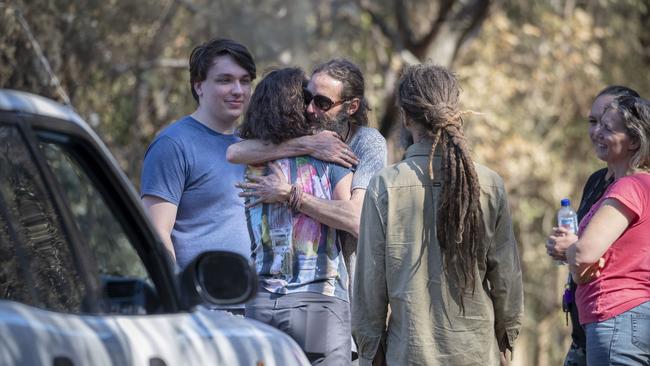
A good feed helps, too, and the CWA has geared up for 24-hour shifts. “All over Beechmont, people were in their kitchens, making casseroles and lasagnes,” Greer says.
The fire is burning in multiple areas: around Binna Burra, down the Numinbah Valley towards Springbrook, embers causing flare-ups in Timbarra and The Summit. Many firefighters, including Ayers, are operating on broken sleep.
Steve Noakes, 64, arrives back from Jakarta mid-afternoon on Saturday. The fire is advancing on Binna Burra, but no trucks can get there because of the fallen trees. Planes drop water continuously. “It was like a Vietnam War movie,” he says. He keeps busy directing traffic at the roundabout. Suzanne is back fighting spotfires in her smouldering estate that night.
It’s gut-wrenching; the silhouettes of burnt homes, the smoke, the loss. She’s “out to save anything”.
“I was like a madwoman,” she says. “Did I foam the you-know-what out of that!”
The wind picks up again Saturday night and into Sunday. Before Steve crawls into a truck to sleep about 3am, a firey tells him, “It’s not looking good for Binna Burra”.
“When I woke up, it was gone.”
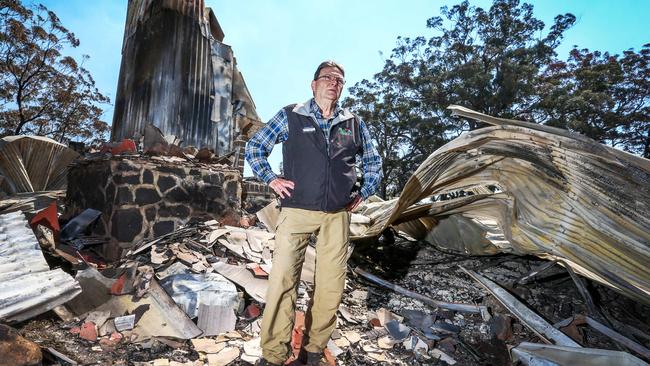
The MacKinnon sisters walk towards Cal’s house, hand-in-hand. They hold their breath: side-on, the brick home looks intact.
Then Cal sees the mini-trampoline that was in her loungeroom lying limp on the veranda, contorted. The French doors are singed and swinging in the breeze, the glass blown out across the lawn. Sally hears her sister whisper, “Oh my God. It’s done.”
Inside, everything is charred and melted. The ceiling is black, a big chunk of it on the floor where it set alight the couches, carpets, cupboards. It’s wet and stinks.
Curiously, there’s a book on the floor, untouched. Sally, 57, picks it up. It’s called Ashes and Burnings. She laughs hysterically as Cal wanders through her home, numb. “Embers had caught in the top storey and fell into the lounge and created an internal fire,” says Cal, 51. “It just burned the inside of the house out.”
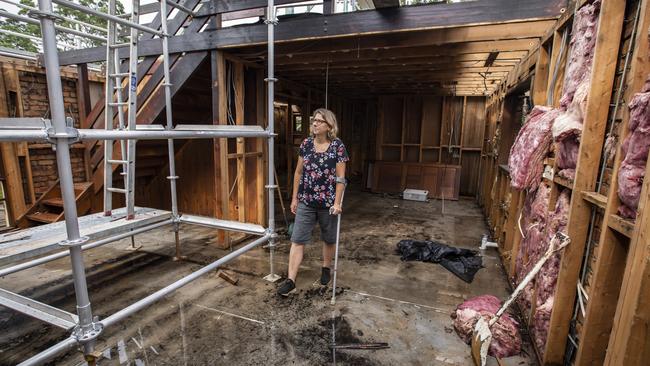
It’s late Sunday afternoon and they’ve just left a community meeting at Canungra. Those who lost homes have been told and escorted in for the heartbreaking first look. Cal’s house wasn’t on the list but she talked her way into the convoy.
A neighbour who’d snuck in to the estate told her it didn’t look good. “We dropped off their radar, I think because from the outside it looked OK.”
It’s the only home on The Summit that burns.
Sally’s old timber home is still standing. They head back to the coast to break the news to Adi, 55, and their 80-year-old mother, Joss, who lives with Cal and Adi.
Late on Tuesday, September 10, all residents are allowed back in. Lisa Groom, 52, who lost a house in a fire in her 20s, seesaws between relief that her home survived and guilt that her neighbours’ didn’t.
She walks in gingerly with her children, Luke and Inari Beyer, 21 and 20, and dog Jack. Outside, the shed is destroyed, the house’s sides charred – but saved at least twice by fireys. “It was quite creepy, with ash raining down, everything burned and smoking. The houses across the road gone.”
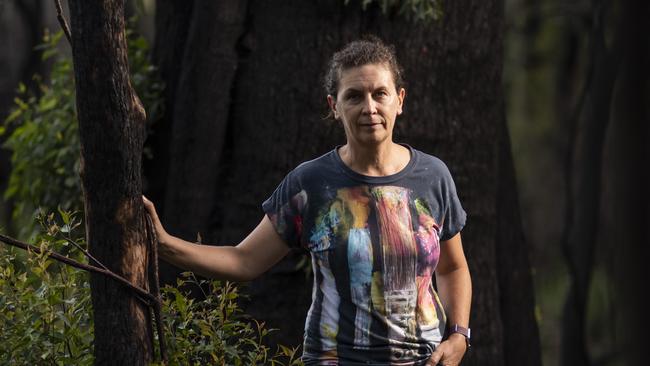
She and her father, Tony Groom, 81, had cried often as they kept tabs on the fire.
Fires had been burning around Stanthorpe, too, and the lifelong studiers of nature were aghast about bushfires so widespread, so intense, in spring.
The loss of Binna Burra Lodge hit hard. That was her playground growing up, as Tony ran the lodge. Even more devastating was the destruction of her childhood home, Alcheringa, just up from the lodge. Her mother, Connie, died there. It and an adjoining cottage, Alcheringa 2, were still owned by the Groom family.
Their destruction, along with the former manager’s residence, brought the total number of houses destroyed in the Beechmont fires to 11.
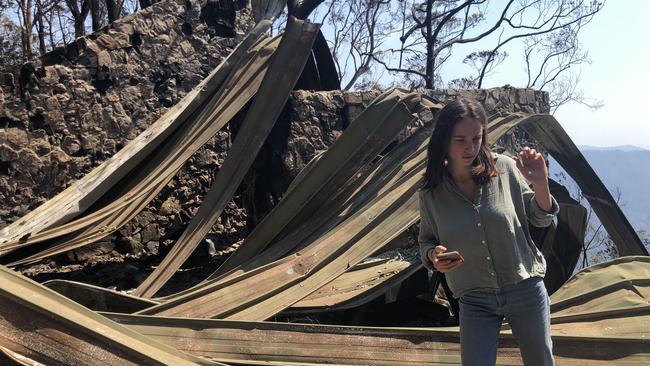
On the Sunday after the fires, Lisa and Tony join a Greenpeace helicopter flight to Binna Burra. They land near Groom’s Cottage, the place she was brought back to as a baby. It’s still standing. Maybe it’s not so bad, she thinks. As they trudge towards the main lodge, the destruction hits them.
“As soon as you see it in real life, you do get shaken, it’s like, ‘Woah this can’t be real’,” says Groom. “The main stone lodge, reception, dining room, kitchens, about 30 cabins on two levels, some of them the original huts. Gone. Down the hill, the Sky Lodges, built to fire standards, still standing, with some damage.”
Groom plays a video she took, sobs filling the soundtrack. Stone walls stand amid crumpled iron and smoking logs. She can be heard saying, “If he doesn’t think this is a climate emergency, what is?” “He” is the Prime Minister, Scott Morrison, who has just flown in to see the devastation.
Morrison doesn’t come up to where the Grooms are, most likely, says Groom because Greenpeace has unfurled a “Climate Emergency” banner across the lawn. “The science is there, the people on the ground are saying it, the fireys are saying it; we have to start taking this more seriously and taking more action.”
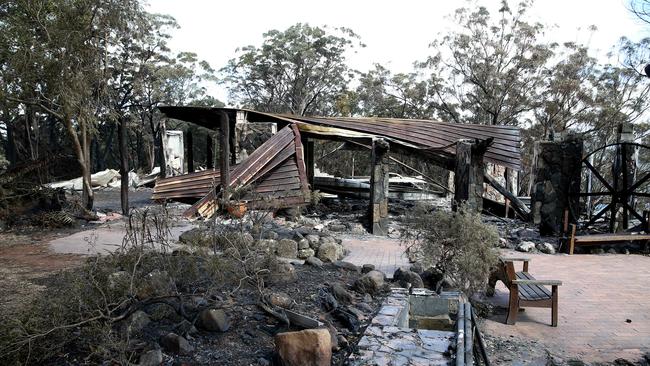
WHAT LIFE IS LIKE NOW
It’s been six months since the fires. Heavy rain has turned dry, brittle forests to verdant green. Regrowth is bursting from the trees.
But rebuilding people’s lives takes longer. All over Australia, families and communities are embarking on the massive job of recovering from the country’s worst bushfire season on record.
Some will be learning to live without loved ones, after 33 people were killed in other states. More than one billion animals have died. Insurance claims worth close to $2 billion have been lodged.
Overall estimates are fraught, but modelling from Deloitte Access Economics and the University of Queensland economist John Quiggin suggest the tangible cost of the season is about $100 billion. Intangible costs – mental health issues, suicide, substance abuse, relationship breakdowns – are estimated at $127 billion on Deloitte figures.
And Beechmont, one of the first communities to face the terror of bushfires, is still immersed in the haze.
Just one of the owners of the seven homes on Timbarra Drive has started construction. The final insurance claim was settled late last month.
Everyone was underinsured, says Leonie Smith, the president of the CWA, which has become the go-to organisation for broken locals. Heightened fire building standards will add to the cost. “They’re all saying rebuilding is going to cost them so much more than what they got.”
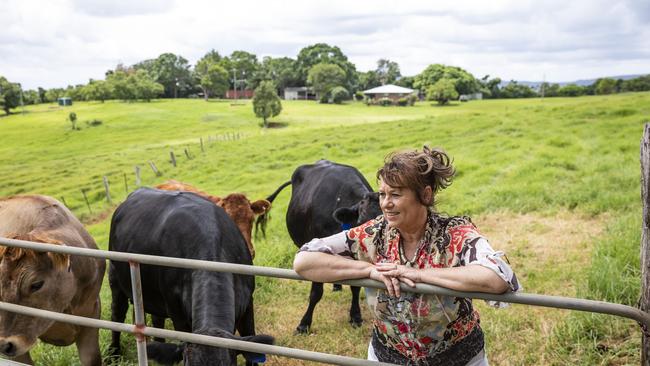
Some are living away from the mountain, adding to feelings of loss and displacement. Some will not return. Some have lost their jobs because they could not deal with the stress and work.
None is ready to speak about their loss, with one woman’s psychologist advising it would be too triggering.
“I would like to talk to you but my family are suffering greatly,” she wrote in a text she gave permission to use, “and I feel I would not be able to cope.”
She remains distressed that Morrison walked on her burned property with the media without consent (the same day he visited Binna Burra) yet her family has received “very little financial help from the government”. Red Cross has provided some help and the CWA is very supportive.
It fell to the CWA to marshal an “Ash Army” to remove debris and outbuildings left after demolition. It also raised $50,000.
“It’s come to light that that is the only money some have received at this stage,” says Smith. “A lot of things have fallen through the gaps in the disaster recovery – we’ve only realised how big the gaps are in the last couple of weeks.” CWA members are helping people deal with all the forms and phone calls required to get assistance.
“These people are in shock, absolute shock, shattered. They’re not in the right headspace to deal with this.”
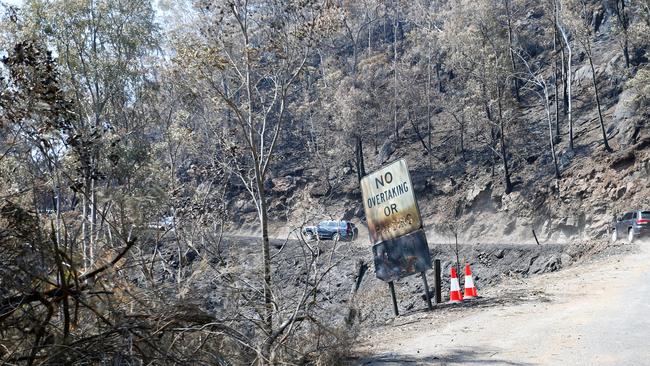
Last month, Smith met with Ian Stewart, the former police commissioner now Queensland Reconstruction Authority co-ordinator, to detail the problems.
She told him the recovery team must contact those who lost homes to talk them through the various grant options.
She’s written to the Scenic Rim Regional Council, which has received disaster funding, asking it to waive rates and development approval fees.
“People feel they’ve been forgotten,” says Smith. “We’re hoping we can bridge that gap after my robust conversation with Ian Stewart.”
A spokesperson for the QRA said grants totalling more than $25,000 had been “activated” for Beechmont residents who lost property, most requiring means testing. Millions of federal and state government dollars will boost business and tourism and a statewide $4.7 million mental health program established.
The trauma hit not only those who lost homes, but those evacuated and those who lived with the fear of fire for months afterwards. Seemingly charcoaled logs would suddenly “candlestick” and spotfires continued to break out well into December.
“All of us had this heightened sense of alert,” says Groom. “Is that smoke? There’s a chopper at 6am, there’s a fire truck, where’s it going?” Rain at Christmas was the first time the town felt the crisis was ebbing.
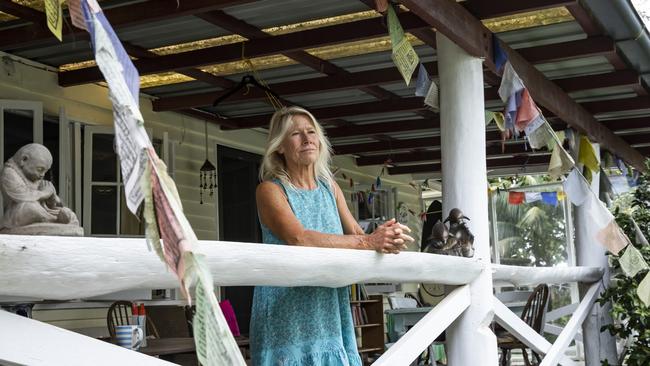
Sally MacKinnon has sought counselling. Cal has been so busy studying, dealing with a friend’s death and negotiating with her insurance company and builders that the numbness is just wearing off.
“All my emotions are coming at me sideways. I’m angry one minute. Then withdrawn the next. Then I’m OK,” she says as we wander through the shell of her home.
“The grief is just starting to hit now.”
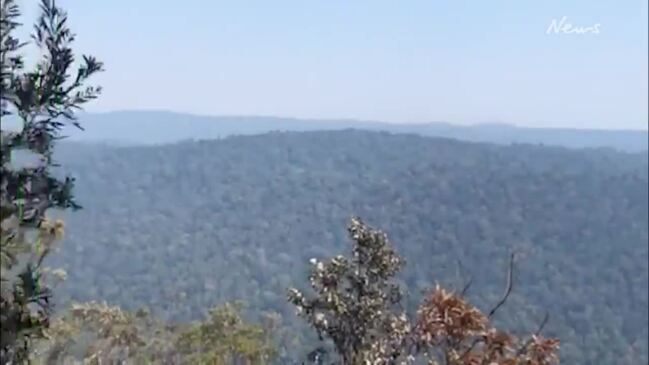
Steve Noakes is standing on Binna Burra Road, pointing above a mountain slope denuded of trees. “That’s the lodge on the top of the knob,” he says, then corrects himself. “Where the lodge was.”
This spot on the road, about 4km away, is as far as we can get to the place that for decades has called nature lovers and bushwalkers keen to explore Gondwana-era rainforests beyond the lodge. The intense fire that scorched the hill has made the slope unstable, causing landslides and rock falls.
For weeks, abseilers have been scarifying the slope, removing everything loose – boulders, trees – before the road can be rebuilt. Heavy rain has delayed work and Transport and Main Roads does not expect it finished until April.
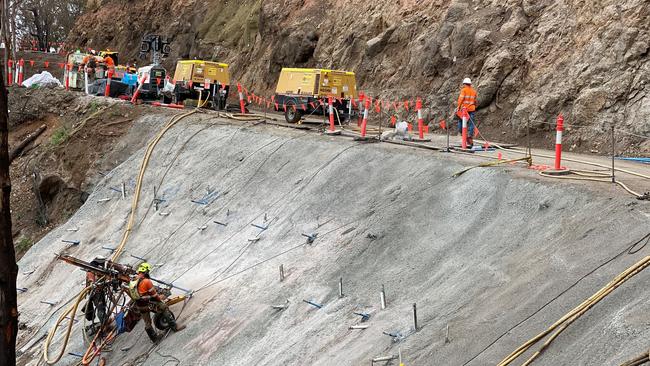
Then the rebuilding of the lodge can begin, with $3 million in insurance money and $1.775 million from the federal and state governments in the kitty. The Teahouse and campground, which escaped damage, and the largely unscathed Sky Lodges, will open first.
The board of the eco-lodge had sought to reduce the fuel load on the eucalypt-lined slope and surrounds.
For more than a decade, it had been working with Queensland Parks and Wildlife and the Beechmont brigade to find a window. It never came.
“We just have not had the right conditions to do the hazard reduction burn,” says Steve. “For some people it sounds simple, but it’s a complex issue to make it safe.”
The risks were illustrated three weeks before the September fires. \
A reduction burn on the Numinbah Valley side of Binna Burra Rd, just up from Timbarra, escaped containment lines and burned for about a week. At the time, locals cursed the lingering smoke. In hindsight, it was a lucky break: if those trees had lit in the big fires, Timbarra and The Summit would have been sandwiched between two fire fronts. The losses could have been huge.
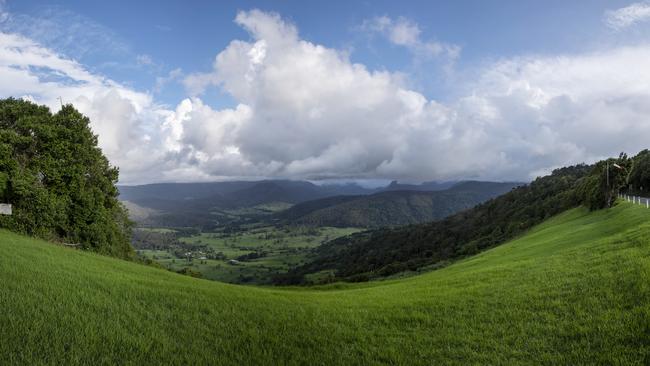
Steve drives to the Headmaster’s Cafe near the roundabout, where Saturday trade is brisk. Scott Parker is behind the cash register. Binna Burra Lodge now manages the cafe, keeping a core staff of eight. About 60 were laid off, although most have jobs after a concerted effort by the lodge and government. “This cafe,” says Noakes, “is part of recovery and healing.”
Life goes on.
A community garden has been set up. B&Bs are taking guests. Motorcyclists are riding the winding roads to Beechmont again. Weddings are being celebrated in the hills that have returned to green. The quiver in the gut has eased.
But it’s not gone. Rebuilding takes time. The emotional wounds cut deep. And locals are coming to terms with living in a fire zone.
It used to be a source of comfort to border a subtropical rainforest, nurturing a belief that while there would be fires, they’d be containable. The summer of “unprecedented” fires that ignited in their little haven during a long, dry spring has changed that forever.

Add your comment to this story
To join the conversation, please log in. Don't have an account? Register
Join the conversation, you are commenting as Logout
Meat worker facing possible deportation after stalking woman
He refused to accept a relationship and made repeated attempts to contact the woman before breaking into her home, threatening to kill her, and posting her personal information to Facebook falsely saying she was new a prostitute in town.
Watch: Veteran’s heartbreak after pitbull kills loved pet at park
A Qld family is distraught after their jack russell-pomeranian cross was killed by a pitbull which also attacked and left one of them covered in blood at a popular dog park. VIDEO, PHOTOS.